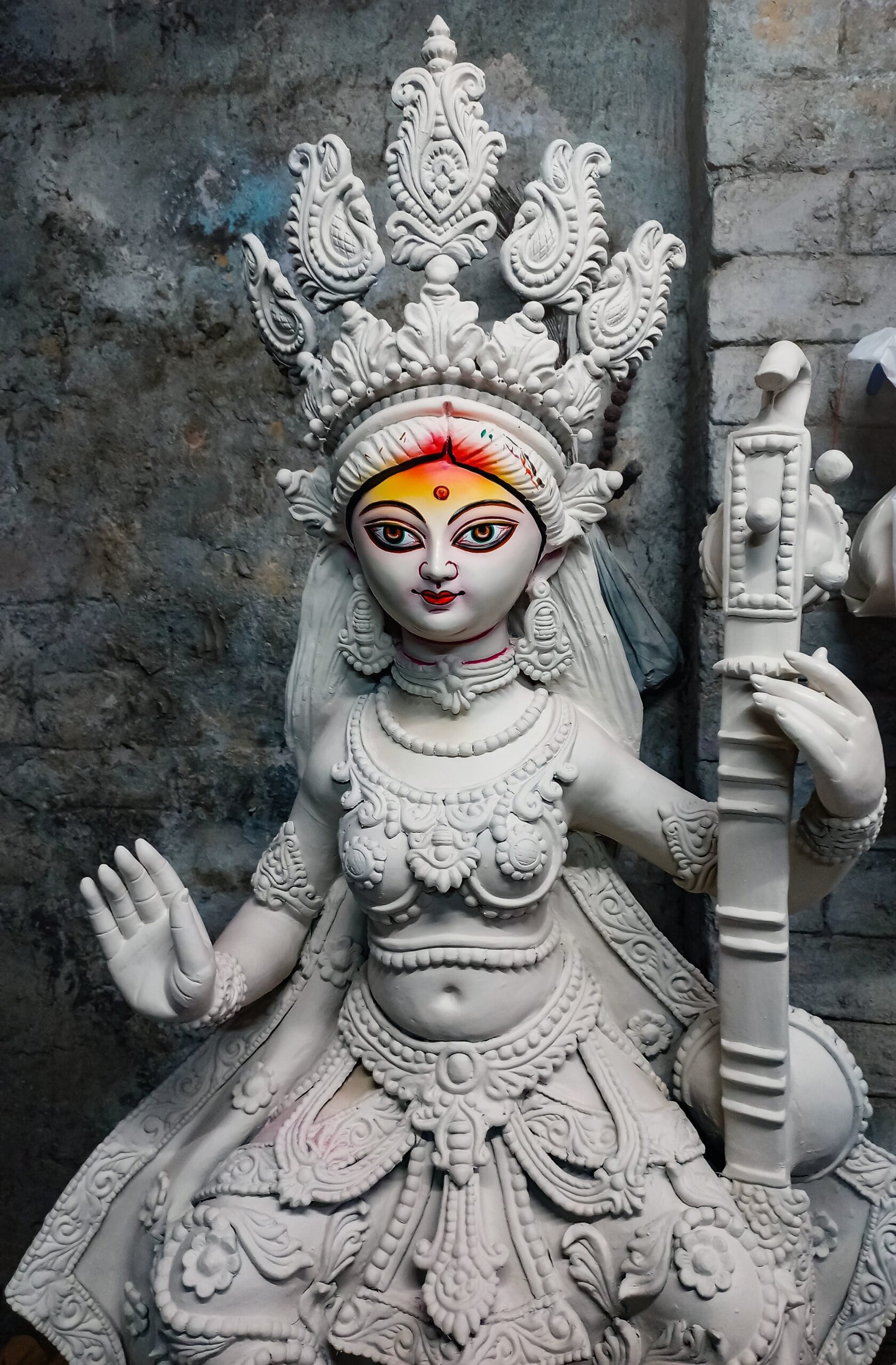Saraswati Puja is celebrated in honour of the Hindu goddess Saraswati, is a festival that marks the preparation for the arrival of spring. It’s also called Vasant Panchami which is the fifth day of Hindu Calendar month Magha. Also 40 days from Vasant Panchami, we celebrate the festival of Holi.
Saraswati Puja is preceded by a thorough cleaning and ornamentation of homes, where flowers, especially marigolds are used to decorate the entire place. The main ceremony is erecting the idol or icon of the goddess. The snan or ceremonial bath represents purification after which Saraswati is dressed in white, symbolising holiness and divinity. As signs of respect, devotees bring sandalwood paste, vermillion and colourful flowers.
The worship of books and musical instruments is distinctive to Saraswati Puja. Acquiring knowledge is a spiritual endeavor because students place their academic tools at the goddess’s feet requesting her blessing of success thereon. During Saraswati Puja, yellow clothes represent a symbolic gesture especially for students. This color represents the future of intellect and creativity, which correspond to goddess’s characteristics.

The tone of Saraswati Vandana, a collection of hymns and prayers for the goddess can be heard in it. In these verses, devotees fervently pray reciting them thankfully for the gift of knowledge and requesting understanding.
Schools and colleges are at the center of celebrations when remembering Saraswati Puja. Schools & colleges arrange grand pujas, cultural shows and competitions. The ritual of immersion marks the end of puja whereby goddess returns to her heavenly abode.
It is specifically celebrated by Hindus in the Indian subcontinent especially India and Nepal. It has also been a tradition among the Sikh community. In some southern states, it is known as Sri Panchami on this day. In Bali and the Hindus of Indonesia, it is called Hari Raya Saraswati (Sarawasti’s great day). It also sets off 210-day Balinese Pawukon calendar.

